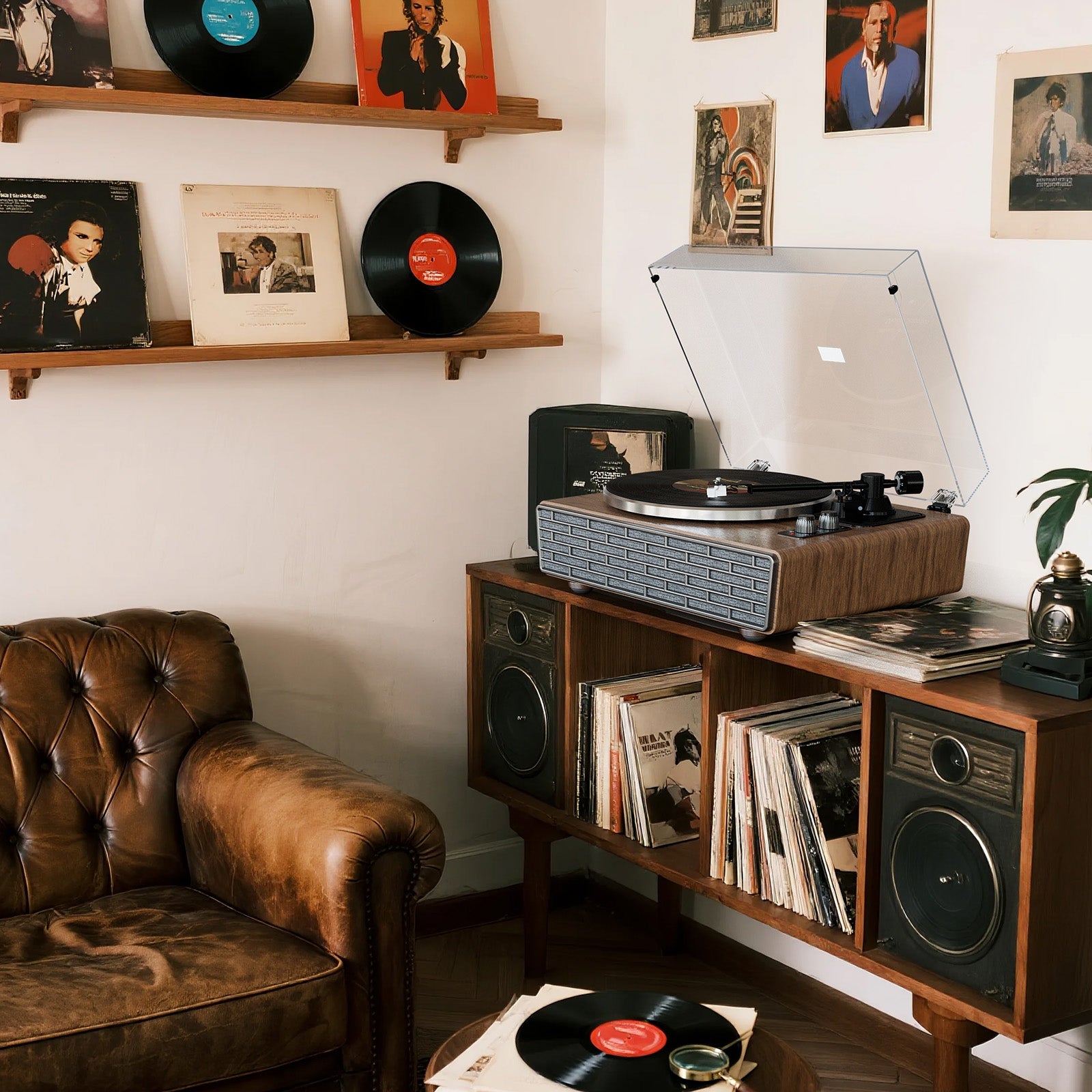Vinyl records have made a remarkable comeback, with audiophiles and casual listeners alike rediscovering the warmth and tactile joy of spinning records. But one question often sparks heated discussions among collectors: mono or stereo? Both formats have their champions, and the debate over which sounds better depends on a mix of technical differences, artistic intent, and personal taste. Let’s dive into the nuances of mono and stereo vinyl pressings to help you decide which might be the better choice for your listening experience.
Understanding Mono and Stereo
Before we compare, let’s clarify what mono and stereo mean in the context of vinyl records:
-
Mono (Monaural): In a mono recording, all sound is mixed into a single channel. When played, the audio is evenly distributed through both speakers (or a single speaker), creating a unified soundstage. Mono was the standard for recordings until the late 1950s, as most playback systems at the time were single-speaker setups.
-
Stereo (Stereophonic): Stereo recordings use two channels (left and right), allowing sounds to be panned across the soundstage. This creates a sense of space and depth, mimicking the way we perceive sound in real life. Stereo became widespread in the 1960s as home hi-fi systems with dual speakers gained popularity.
Both formats have distinct characteristics, and their effectiveness depends on how the music was recorded, mixed, and mastered.

The Case for Mono
Mono pressings hold a special place in the hearts of many vinyl enthusiasts, particularly for albums recorded before the advent of the stereo era (prior to the 1960s). Here’s why mono often gets the nod:
-
Historical Authenticity: Many classic albums, especially in jazz, blues, and early rock ‘n’ roll, were recorded and mixed with mono in mind. Artists and engineers crafted these records for single-channel playback, ensuring that every instrument was perfectly balanced to create a cohesive sound. Stereo versions of these albums were sometimes created later as an afterthought, resulting in awkward panning or artificial separation.
-
Punch and Focus: Mono recordings often sound more direct and impactful. Since all elements are combined into one channel, the mix feels tight and centered. This can be particularly effective for genres like punk, garage rock, or early Beatles records, where raw energy takes precedence over spatial complexity.
-
Better for Certain Systems: Mono pressings can sound fantastic on simpler setups, including vintage record players or single-speaker systems. They’re also less affected by imperfections in stereo equipment, such as mismatched speakers or poor room acoustics.
-
Collectible Value: For collectors, original mono pressings of albums from the 1950s and early 1960s are often more sought after and valuable than their stereo counterparts. For example, a mono pressing of The Beatles’ Please Please Me is a holy grail for many fans due to its historical significance.
However, mono has its limitations. It lacks the spatial depth of stereo, which can make complex arrangements feel flat. For albums with intricate instrumentation or experimental production, mono might not fully capture the artist’s vision.
The Case for Stereo
Stereo pressings are often favored for their immersive qualities, particularly for albums recorded after the mid-1960s when stereo mixing became an art form. Here’s why stereo usually takes the crown:
-
Immersive Soundstage: Stereo allows for panning and separation, placing instruments and vocals across a more expansive soundscape. This creates a three-dimensional experience, making it feel like you’re in the room with the band. Albums like Pink Floyd’s The Dark Side of the Moon or The Beach Boys’ Pet Sounds were designed with stereo in mind, and their brilliance shines through in this format.
-
Modern Mixing Standards: Since the 1970s, most music has been recorded and mixed for stereo playback, as home hi-fi systems became the norm. Stereo pressings of these albums are more faithful to the artist’s intent, as the mix was specifically crafted to take advantage of the two-channel format.
-
Enhanced Detail: Stereo can reveal subtleties in a recording that mono might obscure. For example, you might hear a guitar riff in the left channel and a backing vocal in the right, adding layers of texture to the listening experience.
-
Compatibility with Modern Systems: Today’s vinyl setups, with high-quality turntables, amplifiers, and dual speakers, are optimized for stereo playback. A well-mastered stereo pressing can showcase the full capabilities of a modern hi-fi system.
On the downside, early stereo mixes (especially from the late 1950s to early 1960s) could be gimmicky, with instruments hard-panned to one side or the other, creating an unnatural listening experience. Additionally, stereo pressings require a well-calibrated system to shine—poor speaker placement or low-quality equipment can muddy the sound.
Technical Considerations
The debate isn’t just about preference; there are technical factors at play:
-
Recording and Mastering: The quality of a vinyl pressing depends heavily on the source material and mastering process. A poorly mastered stereo pressing will sound worse than a well-done mono one, and vice versa. For older albums, mono masters are often closer to the original tapes, whereas stereo versions may be reprocessed or “fake” stereo, created by adding reverb to mono recordings.
-
Vinyl Grooves: Mono records have simpler groove patterns, as they only need to encode one channel of audio. This can result in reduced surface noise and improved tracking on specific turntables. Stereo grooves are more complex, requiring precise stylus alignment to avoid distortion.
-
Playback Equipment: To fully appreciate stereo, you need a stereo cartridge and a properly balanced system. Mono pressings are more forgiving, as they don’t rely on channel separation. Some audiophiles even use mono cartridges for mono records to reduce noise and enhance clarity.
Artistic Intent and Genre
The mono vs. stereo debate often comes down to the artist’s vision and the genre of music. For example:
-
Early Rock, Jazz, and Blues: Mono often reigns supreme for artists like Elvis Presley, Miles Davis, or the early Rolling Stones, as these records were crafted for mono playback. The mono mix of Bob Dylan’s Highway 61 Revisited is a favorite for its raw, in-your-face energy.
-
Psychedelic and Progressive Rock: Stereo is typically preferred for bands like The Doors or King Crimson, where spatial effects and layered production are integral to the experience.
-
Classical Music: Stereo is often favored for orchestral recordings, as it captures the depth and positioning of instruments in a concert hall.
If you’re unsure which version to choose, research the album’s production history. Reissues sometimes include liner notes, or online forums (like Steve Hoffman’s or Discogs) can reveal whether the mono or stereo mix is considered definitive.

Personal Taste and Listening Context
Ultimately, the “better” format depends on how you listen. Are you spinning records on a high-end system in a treated room, or do you prefer a portable turntable for casual listening? Do you value historical accuracy or a modern, immersive experience? Here are a few questions to guide your choice:
-
What’s your setup like? If you have a basic or vintage system, mono might sound more cohesive. High-end systems with proper speaker placement can make a stereo sing.
-
What’s the album’s era? Pre-1965 albums often sound better in mono, while later albums are usually optimized for stereo.
-
What’s your listening goal? If you’re chasing authenticity, go for the format the artist intended. If you want a cinematic experience, stereo might be your pick.
Conclusion
The mono vs. stereo debate doesn’t have a clear winner—it’s a matter of context, intent, and preference. Mono pressings offer focus, authenticity, and a direct connection to the music’s roots, making them ideal for early recordings or simpler setups. Stereo pressings offer depth, immersion, and a modern listening experience, making them suitable for complex productions and high-fidelity systems. The best approach? Try both! Many reissues offer both mono and stereo versions, allowing you to compare for yourself. Whether you’re crate-digging for an original mono Miles Davis LP or spinning a stereo Sgt. Pepper’s reissue, the joy of vinyl lies in the journey of discovery. So, drop the needle, sit back, and let the music decide.





Leave a comment
All comments are moderated before being published.
This site is protected by hCaptcha and the hCaptcha Privacy Policy and Terms of Service apply.